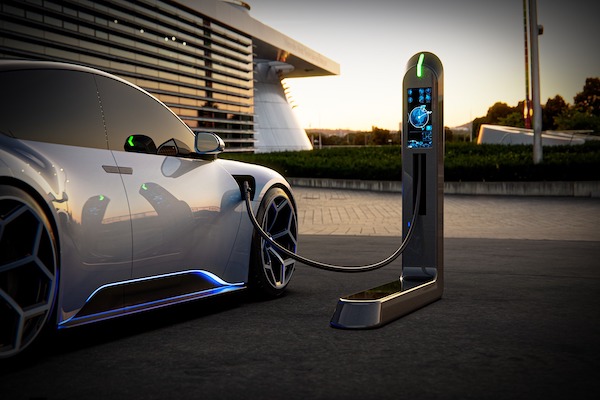You are viewing 1 of your 3 free articles for this month.
Get the knowledge: how to make better choices about cars
Today we hear a lot about the need to travel in greener ways. When Covid struck, the world seemed to stop. Global road use – and the emissions that go with it – halved.
But road transport has bounced back with car usage almost back to pre-pandemic levels. Overall, road transport accounts for a quarter of all greenhouse gas emissions worldwide.

With the world’s population growing rapidly, particularly in developing countries, demand for mobility is expected to more than double compared to 2015 levels.
Given this, how can personal mobility develop sustainably? Public transport, including sustainable cities and car sharing schemes, will be critical, but car ownership is popular. In Europe and the US, 56% and 84% of people have a car. While ownership in lower-income countries is less (30 in every 1,000 people in India have a car), it is set to rise steeply.
The journey to more sustainable transport options will likely be long and complex. When it comes to conventional cars (that is, those powered by internal combustion engines), the most important sustainability issues are listed below.
|
Key sustainability issues
|
The key to positive consumer action is understanding how the issues combine to make one form of transport more sustainable than another. Is an electric vehicle (EV) that uses no petrol truly more sustainable if its electric power comes from coal? How much harder to recycle or toxic is its battery compared to components in a conventional vehicle? Will EVs be the dominant technology - or will other competing approaches emerge? And perhaps most importantly, in the long run, will sustainable mobility transform the way we own and use cars?
At present, there are few simple answers and it can be confusing for consumers faced with competing vehicle manufacturers pushing their unique selling points. The International Energy Agency (IEA) predicts EV sales will reach almost 15m in 2025 and over 25m vehicles in 2030, representing respectively 10% and 15% of all road vehicle sales.
The agency notes many governments around the world are introducing policies that will support EV growth in the long term. Several have also put a target date to end sales of conventional cars (The European Parliament, in June 2022, agreed such a ban for 2035), others have introduced differentiated EV taxation based on lower CO2 or pollutant emissions, cash incentives, or cheaper electricity tariffs for EV owners.
At a local government level, incentives include preferential parking rates, road toll rebates and low-emission zones to attract consumers and businesses towards EVs.

Nevertheless, several surveys have shown that consumers are currently reluctant to switch over in the next few years as prices are seen as too high, battery life too short, and worries persist about charging locations. Confusion reigns.
That confusion is not surprising as significant transformation creates challenges. Delivering sustainable transport solutions will require different interest groups to work together – mainly governments and businesses. But it is critical for people to be involved in that debate. To do that effectively they need to understand the issues, as well as the costs and benefits of different options.
Are EVs the greener option?
Carbon Brief explains that while no greenhouse gas emissions come directly from driving EVs, they run on electricity that is, in a large part, still produced from fossil fuels in many parts of the world. Energy is also used to manufacture the vehicle and in particular, the battery remains an issue.
|
On your bike!
The only greenhouse gas emissions involved in riding a bike come from you, via the food you eat to power your legs. It is estimated that cycling has a carbon footprint of about 21g of CO2 per kilometre. That’s less than walking or getting the bus and less than a tenth the emissions of driving.
Like cars, materials used for bikes, such as aluminium, steel, rubber, and carbon have a negative environmental impact in terms of how they are mined, treated and transported. Many bike parts are shipped or flown from overseas, using fossil fuels to do so.
Bikes do not create noise or air pollution, and they also help cut road congestion, indirectly reducing the impacts of those who drive.
This nifty tool, from Omnicalculator, shows you the effects of switching from a car to a bike. In my case, the daily commute would add 166 days to my life through the health benefits and save 6.9 tonnes of CO2 emissions.
Broken crash helmets are hard to recycle and oil and solvents are used in gears and bearings, but conventional bikes don’t feature batteries containing toxic metals and chemicals like EVs. On the whole, getting on your bike is a clear winner when it comes to green mobility. |
Batteries require large amounts of raw materials, including lithium, nickel and cobalt – mining for which has climate, environmental and human rights impacts. They also leave large amounts of electronic waste unless they are collected, reused or recycled. Companies are seeking new solutions, while new businesses are dealing with batteries after use.
Overall, Carbon Brief has calculated that EVs create considerably lower emissions over their lifetime than conventional (internal combustion engine) vehicles across Europe as a whole. (This is based on a total of 150,000km of driving over a 12-year lifetime.)
In countries with coal-intensive electricity generation, the benefits of EVs are smaller and they can have similar lifetime emissions to the most efficient conventional vehicles, such as hybrid-electric models.
But as countries decarbonise electricity generation to meet their net zero climate targets, emissions will fall correspondingly for existing and future EVs and manufacturing emissions will fall for new EVs too.

EV charging and infrastructure: Chicken and egg?
Governments and businesses globally are looking for affordable ways to build charging infrastructure into existing homes and streets, as well as throughout the transport system to charge EVs away from home. The change is happening but it remains slow for now. Various apps (like Zap Map) and websites (like Ionity) are designed to help EV drivers locate and navigate to available charge points.
Battery powered cars are not the only alternative to address the climate impacts of conventional cars. Although considerably less developed, hydrogen-fuel (such as Toyota’s Mirai and Hyundai’s Nexo) and solar powered cars (like Sono Motors Sion) are also progressing.
|
We want to hear from you
As the journey to sustainable mobility unfolds, Ocki will be keeping you up-to-date with the latest developments and insights.
In the meantime, what’s your story? We want to hear your experience, challenges and questions relating to sustainable transport. Submissions to info@ocki.co.uk |
Check it out
For more information on these issues
- World Business Council for Sustainable Development Sustainable mobility post Covid.
- Carbon Brief Factcheck: How EVs tackle climate change.
- MIT Energy Initiative Pathways for sustainable personal transportation November 2019.
- Why cars are so important - the European Auto Industry Association
- World Economic Forum why personal mobility matters
- Calculator, from Paul Scherrer Institute, is an open source life cycle assessment tool for passenger cars.
- What’s the difference between hydrogen and electric cars by Toyota
Activate employees
Find out how OckiPro membership engages employees to deliver sustainability impact.
Get Involved
There are many ways to get involved with Ocki and its community. To find out more, click the button below



